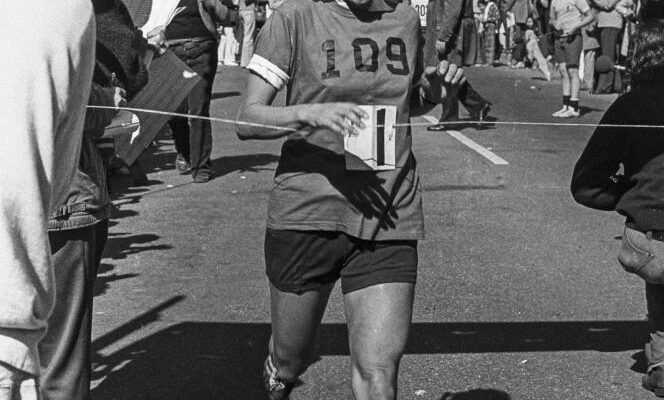The thick black filing cabinet is on the kitchen table. It contains, classified by year, the sporting achievements of Nina Kuscsik. The pages scroll before the eyes of this pioneer of the marathon in her home in South Huntington, Long Island, in the United States. Memories intertwine and sometimes get lost between the yellowed articles, the faded photos and the laughter of this 82-year-old lady. When his gnarled fingers stopped in 1970, they found no trace of his participation in the first New York marathon which, on November 7, celebrated its fiftieth edition after a year of absence due to Covid-19.
Nina Kuscsik did not cut the article from New York Times which relates the event. It is however mentioned there. Back then, the race had little to do with today’s show. It takes place in Central Park – more than four laps of Manhattan’s green lung to complete the 42.195 kilometers. On this September day, they are 127 to position themselves on the starting line.
Among them, only one woman, Nina Kuscsik. But she does not come to the end. “I really wanted to finish, assured at the time the thirty-something New York Times. But I caught a virus earlier this week and just didn’t make it. (…) By giving up, I also avoid problems with the AAU ”, the Amateur Athletic Union, the powerful federation that manages marathons in the country.
His presence is indeed unofficial. The AAU prohibits women from competing over long distances. They would not be tough enough, it could damage their health, their femininity. Nina Kuscsik still remembers that episode, in those years, when she was jogging in the rain. “ A police car stopped me. They figured I needed help. I told them no, that I was running for fun. For them, I was running from something… ”
Women’s lawyer
When this young mother puts on her sneakers, in 1969, for her first marathon – the Boston’s oldest and most prestigious – she knows that women are not welcome but she challenge to finish it. What she does in 3 h 46 min. His time does not appear in the results because his participation remains illegal. She only knows him because she spotted a runner who crossed the white line by his side.
She then decides to mobilize. “I started to study the rules decreed by the federation to see how we could change them, she explains. I just wanted to run and compete. I saw there an opportunity to achieve my ends. “ She can count on the small band that she finds at each race, passionate men and women, few in number but determined and united.
You have 52.16% of this article to read. The rest is for subscribers only.
